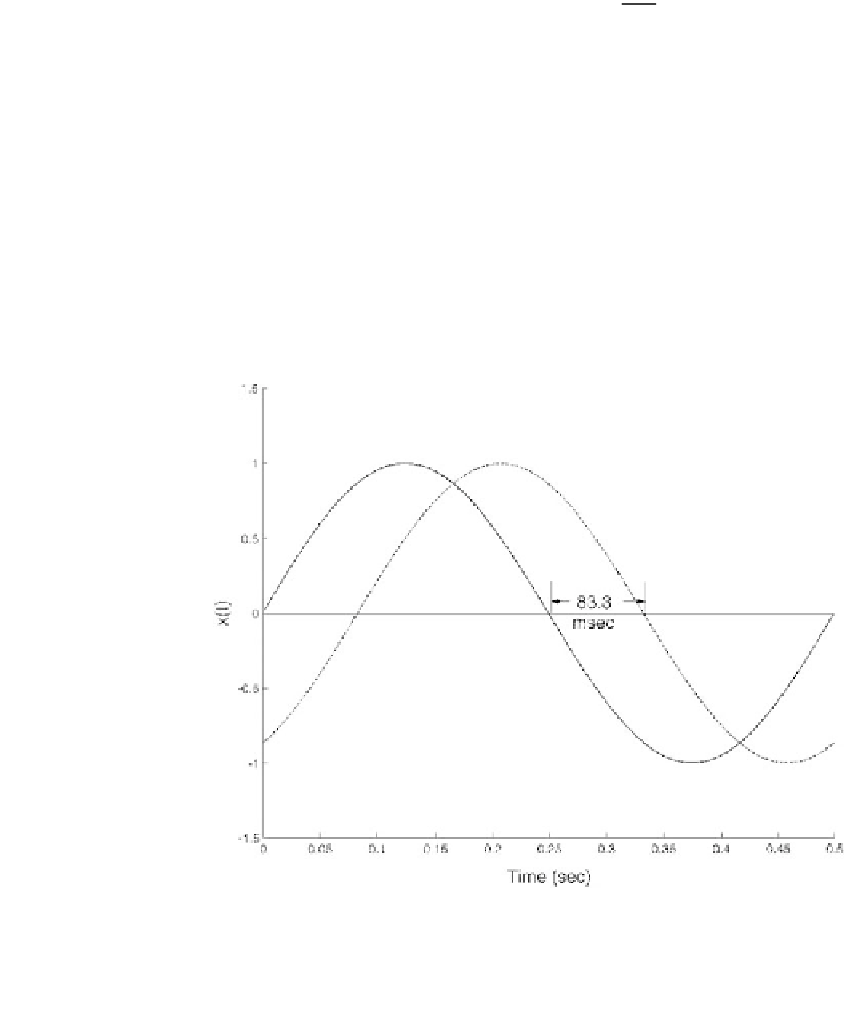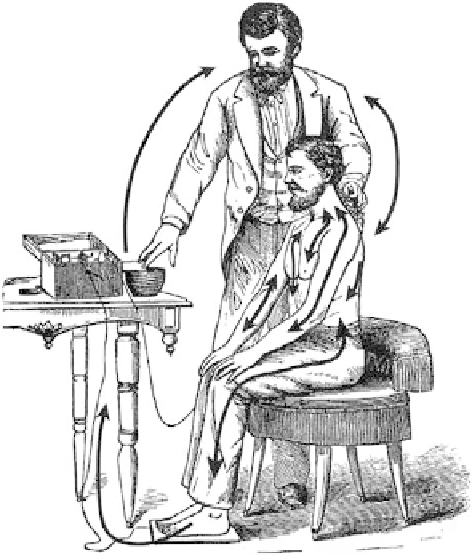Biomedical Engineering Reference
In-Depth Information
sinusoidal signals described in this text are expressed as
in Eq.
2.4.5
.
Figure 2.4-2
shows two sinusoids that differ
by 60 degrees.
To convert the difference in phase angle to a differ-
ence in time, note that the phase angle varies through 360
degrees during the course of one period,
T
seconds. To
calculate the time difference or time delay between the
two sinusoids,
t
d
,
given the phase angle q
:
q
360
T ¼
q
360
f
q
¼
t
d
t
d
¼
or
T
360
¼
360
t
d
f
[Eq. 2.4.6]
where
f ¼ f
p
¼
1
=T
For
the 2-Hz
sinusoids
in
Figure 2.4-2
,
T ¼
1
=f ¼
0
:
5 seconds, so:
360
T ¼
60
q
t
d
¼
360
0
:
5
¼
0
:
0833 seconds
¼
83
:
3 milli seconds
Example 2.4.1: Find the time difference or delay be-
tween two sinusoids:
Figure 2.4-1 Signals continuously pass between various parts of
the body. These biosignals are carried either by electrical energy,
as in the nervous system, or by molecular signatures, as in the
endocrine system and many other biological processes.
Measurement of these biosignals is fundamental to diagnostic
medicine and to bioengineering research.
x
1
ðtÞ¼
cos
ð
4
t þ
30
Þ
and
x
2
ðtÞ¼
2 sin
ð
4
tÞ
Solution:
Convert both to a sine or cosine (here we con-
vert to cosines):
where again the phase, q
,
would be expressed in degrees
even though the frequency descriptor (u
p
t,
or
2
p
f
p
t,
or
2
p
t/T
) is expressed in radians or hertz. Many of the
x
2
ðtÞ¼
2 cos
ð
4
t
90
Þ
Figure 2.4-2 Two 2-Hz sinusoids that differ in phase by 60 degrees. This phase difference translates to a time difference or delay of
83.3 msec.








